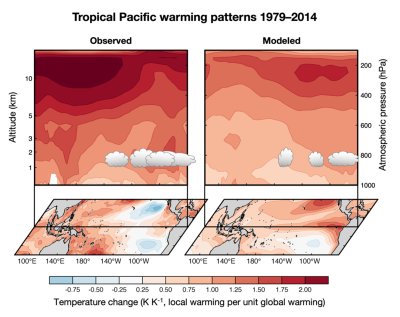Patterns of Surface Warming Matter for Climate Sensitivity
PCMDI Scientists and colleagues at Colorado State University, University of Colorado Boulder, Imperial College London, and the Met Office Hadley Centre highlight the key historical developments, open questions, and promising avenues for progress in the study of the effect of surface warming patterns on Earth’s energy balance.
As Earth warms, it sheds more heat to space via radiation, keeping the climate stable. However, the efficiency with which this occurs depends not only on how much the planet warms, but on the spatial pattern of that warming. This so-called “pattern effect” has huge ramifications for constraining climate sensitivity based on climate changes observed to date. The team reviews the state of the science on this topic, with an eye toward promising avenues, tools, and observations for future progress.
The authors review the state of the science on the pattern effect, which describes the dependence of Earth’s radiative energy balance on the spatial pattern of surface temperature change. Physical mechanisms driving the pattern effect, implications for estimating and constraining climate sensitivity, and pressing unanswered questions are provided, providing fodder for future research. The commentary concludes with a call for continued collaboration between the diverse communities studying relevant aspects of climate dynamics.

